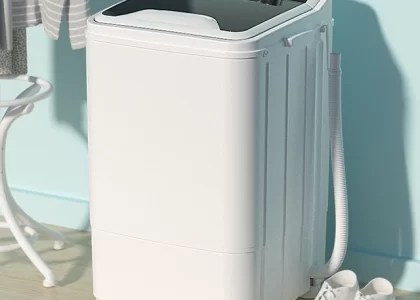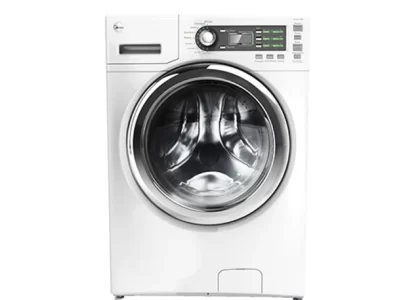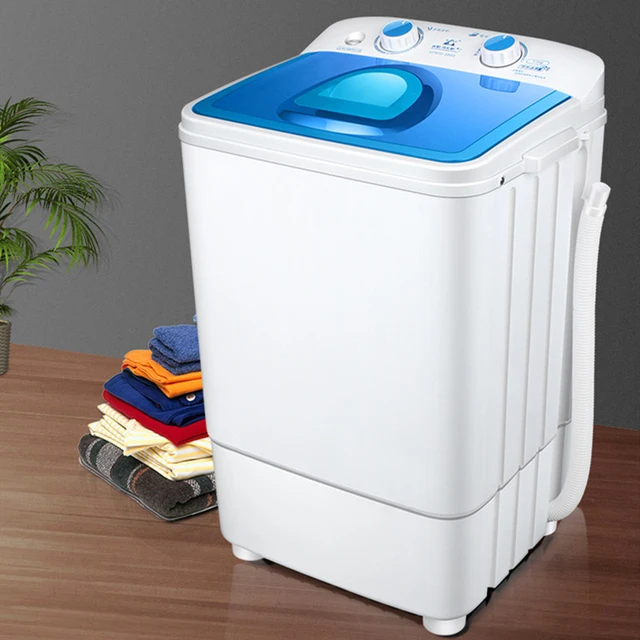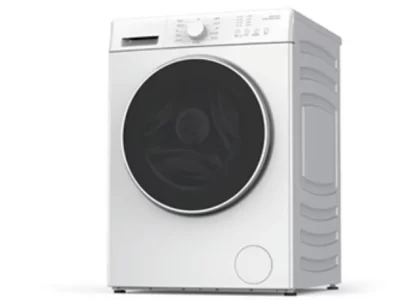 Introduction:
Introduction:
A washing machine is an essential appliance that simplifies the task of doing laundry. While it may seem straightforward, using a washing machine efficiently and correctly can help you achieve clean and fresh laundry every time. In this comprehensive guide, we will explore the step-by-step process of using a washing machine. From sorting and loading clothes to selecting the right settings and maintaining the machine, we will provide practical tips and techniques to ensure optimal washing results. By following these guidelines, you can make the most of your washing machine and enjoy clean and fresh laundry with ease.
Some common types:
There are several types of washing machines available on the market. Here are some common types:
Top-Loading Washing Machines:
These machines have a vertically positioned drum and a lid on top for loading and unloading clothes. They are typically more affordable, take up less space, and are easier to load and unload compared to front-loading machines. However, they generally use more water and energy.
Front-Loading Washing Machines:
Front-loading machines have a horizontal drum and a door on the front for loading and unloading clothes. They are known for their efficiency, using less water and energy compared to top-loading machines. They often have larger capacity and provide a gentler wash cycle. However, they can be more expensive and may require more bending or kneeling to load and unload.
High Efficiency (HE) Washing Machines:
HE machines are designed to use less water and energy, making them more environmentally friendly and cost-effective in the long run. They can be either top-loading or front-loading machines.
Portable Washing Machines:
Portable washing machines are smaller and more compact, making them suitable for small spaces or for those who frequently move. They are typically top-loading machines and require manual filling and draining of water.
All-in-One Washer/Dryer Combo:
These machines combine both washing and drying functions in a single unit. They are convenient for those with limited space or who prefer the convenience of a single machine for both tasks. However, they may have smaller capacity and longer drying times compared to standalone dryers.
Smart Washing Machines:
These machines are equipped with advanced technology, including Wi-Fi connectivity and smartphone integration. They allow users to control and monitor the washing process remotely, receive notifications, and access additional features or settings.
These are just a few examples of the types of washing machines available. It’s important to consider factors such as capacity, efficiency, features, and budget when selecting the right type of washing machine for your needs.
Understanding the Different Components:
Control Panel:
Familiarize yourself with the control panel of your washing machine, which typically includes buttons or a dial for selecting various settings.
Detergent Drawer:
Locate the detergent drawer, usually located on the top or front of the machine, where you add detergent, fabric softener, or other laundry additives.
Drum:
The drum is where you place your clothes for washing. It is located inside the washing machine and rotates during the wash cycle to clean the laundry.
Sorting and Preparing Clothes: 2.1 Sort by Color and Fabric:
Separate your laundry into different piles based on color and fabric type.
Sort dark colors, light colors, and whites separately to prevent color bleeding.
Check Garment Labels:
Read the garment labels to identify any specific care instructions, such as temperature limitations or hand-wash only items.
Empty Pockets and Secure Fastenings:
Empty all pockets and remove any items such as coins, keys, or tissues that may damage the washing machine or your clothes.
Secure buttons, zippers, and hooks to prevent them from snagging or damaging other garments.
Loading the Washing Machine:
Open the Washing Machine Door:
Open the washing machine door and ensure it is fully open and stable.
Place Clothes in the Drum:
Carefully place the sorted clothes into the drum, ensuring they are evenly distributed and not overcrowded.
Avoid overloading the machine, as it can affect the cleaning efficiency and cause excessive wear on the machine.
Adding Detergent and Laundry Additives:
Measure the Detergent:
Read the detergent packaging for instructions on the appropriate amount to use based on your laundry load size and the level of soiling.
Use a measuring cup or follow the manufacturer’s guidelines for accurate measurement.
Add Detergent to the Drawer:
Open the detergent drawer and pour the measured detergent into the appropriate compartment.
Add any fabric softener or laundry additives according to their specific instructions.
Selecting the Washing Machine Settings:
Choose the Wash Cycle:
Select the desired wash cycle based on the type of clothes and level of dirtiness.
Common wash cycles include normal, delicate, permanent press, or specific cycles for heavily soiled items or bedding.
Adjust Water Temperature:
Choose the appropriate water temperature based on the garment care labels and the desired level of cleanliness.
Hot water is suitable for whites and heavily soiled items, while cold water is ideal for delicate fabrics and dark colors.
Select Spin Speed:
Choose the spin speed based on the garment care labels and the desired level of moisture remaining in the clothes after the wash.
Higher spin speeds extract more water from the clothes, reducing drying time, but may be unsuitable for delicate fabrics.
Set Additional Options:
Some washing machines offer additional options, such as pre-wash, extra rinse, or delay start.
Choose these options as needed, depending on the specific requirements of your laundry.
Starting the Wash Cycle:
Close the Washing Machine Door:
Ensure that the washing machine door is securely closed before starting the wash cycle.
Double-check that no garments are caught in the door seal.
Start the Cycle:
Press the start button or turn the dial to begin the selected wash cycle.
The machine will begin to fill with water and initiate the washing process.
Maintenance and Cleanup:
Clean the Washing Machine Regularly:
Periodically clean the drum, detergent drawer, and rubber seals to remove any detergent residue, lint, or debris.
Follow the manufacturer’s instructions for cleaning the specific parts of your washing machine.
Remove Clothes Promptly:
Once the wash cycle is complete, remove the clothes promptly to prevent musty odors or wrinkles.
Leave the washing machine door open to allow air circulation and prevent moisture buildup.
Wipe Down the Drum and Exterior:
After each use, wipe down the drum and exterior of the washing machine with a clean cloth to remove any remaining moisture or detergent residue.
 Conclusion:
Conclusion:
Knowing how to use a washing machine correctly is essential for achieving clean and fresh laundry. By following the step-by-step instructions and tips provided in this comprehensive guide, you can make the most of your washing machine and enjoy efficient and effective laundry routines. From sorting and loading clothes to selecting the appropriate settings and maintaining the machine, each step plays a crucial role in ensuring clean and well-maintained laundry. Embrace the opportunity to simplify your laundry tasks and create fresh and clean clothes with the help of your washing machine.







